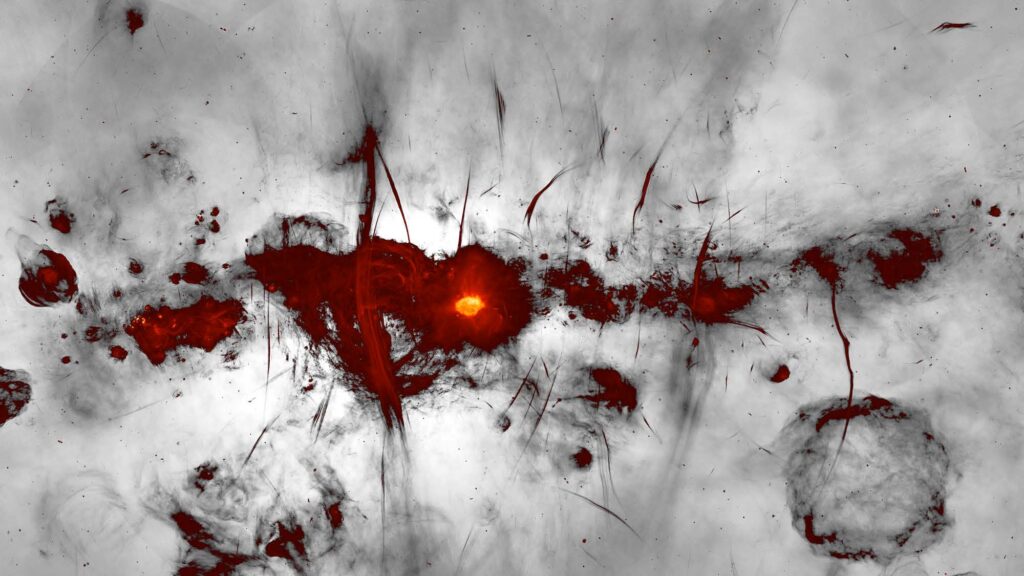Project area/S
- Galaxies
Project Details
Deuterium is a Hydrogen atom with an extra proton and was formed shortly after the Big Bang via nucleosynthesis. After Hydrogen and Helium it is the third most abundamt element in the Universe. As it is not created, but only destroyed in stars, all Deuterium is primordial and a tracer of the conditions in the very early Universe. Deuterium has only been detected in compound molecules to date whereas most of it must be in atomic form.
This project will aim to detect the hyperfine transition of neutral atomic Deuterium at 327 MHz (the DI line) with observations obtained from an SKA prototype. In total ten hours of data was obtained toward the Galactic Centre where the DI line is expected to be seen in absorption (analogous to the absorption of the well-studied Hydrogen 21cm hyperfine line, HI). The expected signal will be simulated by scaling the HI line by the expected ratio of abundance.
Code will be developed to process these observations of the Galactic Centre accounting for numerous instrumental effects. The code will be run on this data to create a spectrum towards the Galactic Centre at 327 MHz. A novel detection or constraint on the optical depth of the DI line towards the Galactic Centre will be obtained

A MeerKAT image of the Galactic centre region is shown with the Galactic plane running horizontally across the image. Many new and previously-known radio features are evident, including supernova remnants, compact star-forming regions, and the large population of mysterious radio filaments. The broad feature running vertically through the image is the inner part of the (previously discovered) radio bubbles, spanning 1400 light-years across the centre of the Galaxy. Colours indicate bright radio emission, while fainter emission is shown in greyscale. Credit: I. Heywood, SARAO.
Student Attributes
Academic Background
Some astrophysics preferred, but a general physics background essential
Computing Skills
Reasonable skills in Python or a similar computing language required
or the ability and confidence to develop them quickly.
Training Requirement
Some python development preferred.
Project Timeline
| Week 1 | Inductions and project introduction |
| Week 2 | Initial presentation |
| Week 3 | Modelling of expected signal from observations of Hydrogen absorption towards the Galactic Centre. |
| Week 4 | Processing the first night of data |
| Week 5 | Refinding the code and accounting for instrument effects |
| Week 6 | Processing all five nights |
| Week 7 | Extracting the final signal and comparing to predictions |
| Week 8 | Using the final result to constrain conditions in the early Universe. |
| Week 9 | Final presentation |
| Week 10 | Final report |
